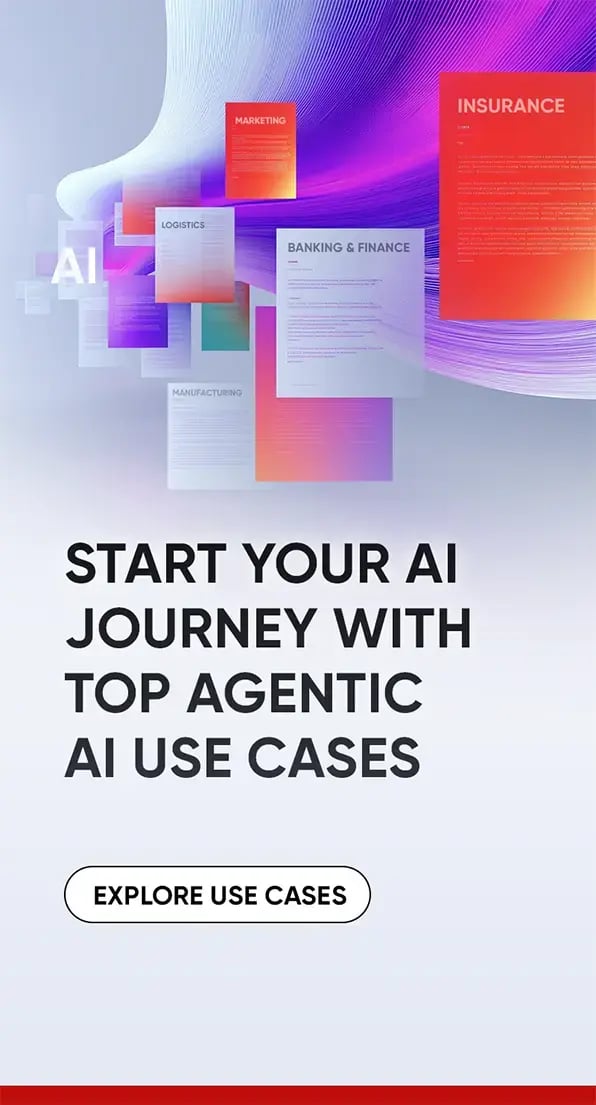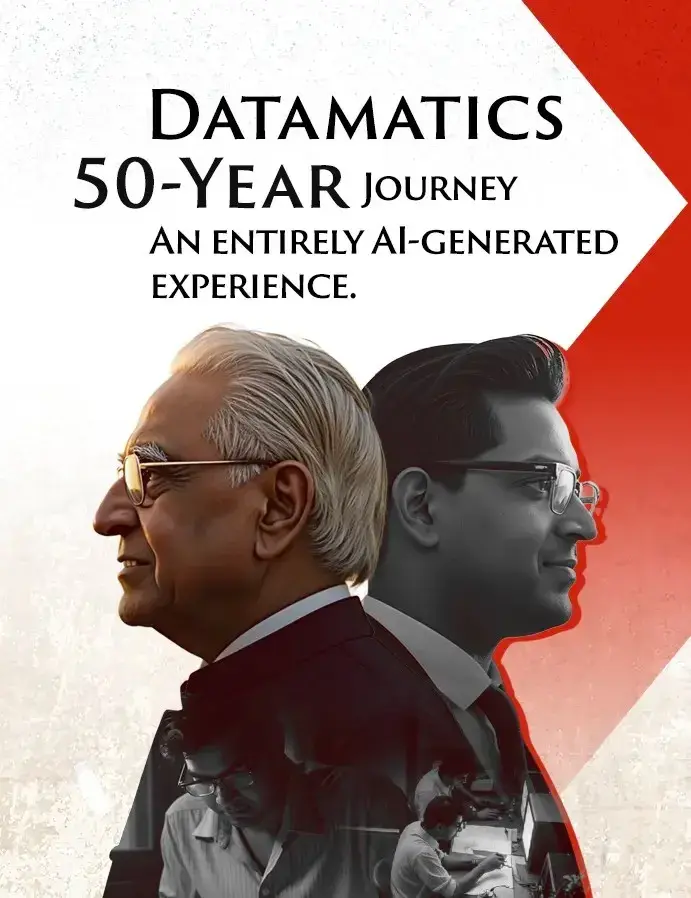The Future of AI: How Multi-Agent & Multi-Modal Systems Are Reshaping Industries
by Ritendra Srivastava, on Apr 7, 2025 12:46:00 PM
Key takeaways from this blog:
- Multi-Agent AI improves joint decision-making and distributed intelligence
- Multi-Modal AI combines various types of data for more nuanced understanding and greater real-world applicability
- Security, scalability, and efficiency continue to be key—Zero Trust, Explainable AI, and Kubernetes-based architectures need to be onboarded
In the boundless, always-growing universe of artificial intelligence, two game-changing innovations are revolutionizing the way industries function silently but deeply—AI Multi-Agent Systems and AI Multi-Modal Systems. They are not merely buzzwords; they are the key drivers behind more intelligent automation, better decision-making, and AI that interprets the world much like a human.
From the markets to autonomous vehicles, medical diagnostics to warehouse automation, these multi-agent AI systems are bringing in a new world of intelligence that is more adaptive, perceptive, and collaborative than ever.
Let's go deeper into the functioning of these technologies, their influence across industries, and how companies can capitalize on them to become competitive leaders.
AI Multi-Agent Systems: The Power of Synergistic Intelligence
Picture a live stock market with several traders working in parallel, each with its own approach. Some study trends, others evaluate risks, and some make trades—all while reacting to market variations in real time. Now substitute human traders with AI agents, each performing one task, coordinating and learning from each other. That's the idea behind an AI Multi-Agent System.
How It Works
Fundamentally, an AI Multi-Agent System is a community of intelligent agents collaborating—cooperatively or competitively—on a common objective. Each agent acts autonomously but shares information using message brokers such as Kafka or RabbitMQ to allow them to operate harmoniously in sync.
The system follows a structured workflow:
- Agents Observe Data: They analyze their environment, processing real-time inputs
- Agents Make Decisions: They decide on the best course of action using reinforcement learning (RL) algorithms like deep Q-learning
- Agents Communicate: They exchange information via decentralized networks, ensuring optimal decision-making
- The Environment Updates, and Agents Learn: The system continuously improves, adapting to new patterns and refining its strategies
Where AI Multi-Agent Systems Are Making an Impact
- Finance: Trading bots optimize investments, while fraud detection agents analyze suspicious transactions
- Healthcare: AI agents assist in medical diagnostics, optimizing patient treatment plans
- Smart Cities: Traffic management AI agents coordinate signals, public transport, and congestion control
- Gaming: NPCs (non-player characters) are no longer predictable; they learn and strategize dynamically
- Robotics: Warehouse automation thrives as multiple AI robots collaborate in real-time to optimize logistics
AI Multi-Modal Systems: Seeing, Hearing, and Understanding the World Like Never Before
While AI Multi-Agent Systems focus on collaboration, AI Multi-Modal Systems enhance perception. Traditional AI models often process a single data type—either text, image, or audio. But the world isn’t one-dimensional. A conversation involves words, tone, body language and facial expressions. A self-driving car needs to understand & process traffic signals, road signs, and surrounding objects simultaneously. Multi-Modal AI bridges these gaps.
How It Works
These systems integrate multiple data types (text, images, speech, video, structured data) to generate richer insights. Here’s how:
- Collect Multi-Modal Data: Text, images, audio, and structured data are gathered
- Process Each Data Type Separately: Computer vision handles images, NLP interprets text, and audio models analyze speech
- Fuse Data for Deeper Insights: Using cross-attention deep learning networks, the system combines different modalities
- Make Predictions and Improve Over Time: The AI continuously refines its accuracy, learning from every interaction
Where Multi-Modal AI is Transforming Industries
- Healthcare: AI diagnoses blend radiology scans, patient history, and genetic information for better analyses.
- Autonomous Vehicles: Autonomous cars combine LiDAR, GPS, and cameras to travel safely
- Retail & E-commerce: AI shopping assistants are personalized with the use of images, reviews, and browser history to make product recommendations.
- Safety: AI-based surveillance integrates CCTV images, voice recognition, and biometric scanning to identify dangers.
- Media: AI facilitates video editing, automatic content generation, and dynamic content suggestions
Real-World Implementation: How Industries are Leveraging These AI Systems
Healthcare: AI Multi-Modal Systems for Advanced DiagnosticsImagine an AI-powered diagnostic assistant that doesn’t just analyze X-rays but understands patient history, genetic data, and symptoms—leading to early disease detection and better treatment recommendations.
- Data Collection & Processing: AI ingests MRI scans, electronic health records, and genomic sequences
- AI Model Fusion: A CNN model analyzes medical images, while an NLP model (like BioBERT) processes patient records
- Security & Compliance: HIPAA-compliant encryption ensures data privacy, while Explainable AI (XAI) tools like SHAP and LIME provide transparency
- Deployment: Doctors access AI-powered insights through dashboards integrated with Power BI and FastAPI endpoints
High-frequency trading and fraud detection are no longer purely human-driven. AI agents now dominate the landscape.
- Fraud Detection Agent: Analyzes financial transactions for anomalies using time-series modeling and anomaly detection
- Risk Assessment Agent: Monitors credit scores and customer behavior to predict defaults
- Trading Agent: Uses Reinforcement Learning to optimize investments, adjusting in real-time to market conditions
- Security Measures: Implementing Zero Trust authentication and adversarial attack detection using AI Fairness 360
Self-driving technology demands both multi-modal perception and multi-agent decision-making.
- Data Fusion: LiDAR captures depth, cameras detect objects, and GPS pinpoints location
- AI Models at Work: YOLO handles object detection, while Reinforcement Learning guides decision-making on lane switching and braking
- Security & Transparency: Explainability tools like SHAP ensure AI decisions are interpretable, while ISO 21434 compliance secures automotive AI from cyber threats.
Final Thoughts: Synergy of technologies
As AI continues to evolve, Multi-Agent and Multi-Modal Systems are reshaping industries by making machines more autonomous, perceptive, and intelligent.
Whether it's transforming healthcare, streamlining financial markets, or pushing autonomous cars, these AI platforms are filling the gap between human thought and machine intelligence. The question is not whether companies should implement them—it's how quickly they can do so to remain competitive in the AI-powered world.
Next Reading

















